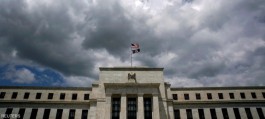The dollar steadied in early trading on Monday, clinging to its biggest weekly gain since 2022, as the US currency received support from the escalating crisis in the Middle East and concerns about continued high US interest rates.
The dollar rose 1.6 percent against a basket of six major currencies last week after a rise in U.S. inflation data cast doubt on bets on a U.S. interest rate cut, while European policymakers indicated a rate cut within a few months.
The dollar hit a five-month high against the euro on Friday, with the euro trading near those levels early in the Asian session at $1.0655.
The biggest losses on Monday were for the Japanese yen, which hit a 34-year low of 153.85 to the dollar.
The yen's slide against the dollar has revived expectations of government intervention to support the currency. Japanese Finance Minister Shunichi Suzuki said he was closely monitoring the currency's movements and that Tokyo was fully prepared to act.
The initial reaction in currencies appeared to be more focused on the fading expectations of a Federal Reserve rate cut than on Iran’s attack on Israel earlier this week, which sent stock markets tumbling and hurt bitcoin and oil.
Iran has warned of a strike on Israel and fired drones and missiles at the weekend in response to what it said was an Israeli attack on its consulate in Damascus. The Iranian response caused only modest damage and Iran said it now considered the matter over.
Two senior Israeli ministers indicated Sunday that an Israeli response was not imminent and that Israel would not act alone, leaving the region on edge about the risk of a wider crisis. Global financial markets have taken a wait-and-see stance.
Jason Wong, chief market strategist at BNZ, said it was too early to judge... It was really a symbolic attack over the weekend... It was never intended to do much damage. Now it's about how Israel will respond.
Investors cut bets on Federal Reserve rate cuts and focused on September as the start of the easing cycle after Wednesday's consumer price report showed a stronger-than-expected rise.
Two-year Treasury yields rose above 5 percent on Thursday. The yield was last trading at 4.92 percent.
The euro posted its biggest weekly percentage decline since late September 2022 last week while the pound posted its biggest weekly percentage decline since mid-July.
Bitcoin fell below $62,000 on Sunday, losing $10,000, or 15 percent, from its highs a week ago. It last traded at $65,343.









































